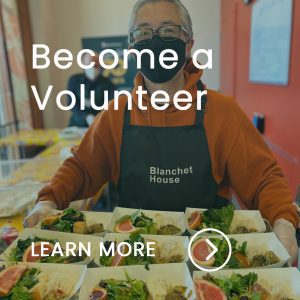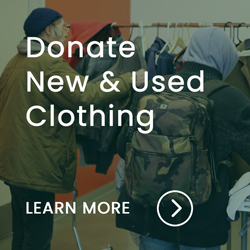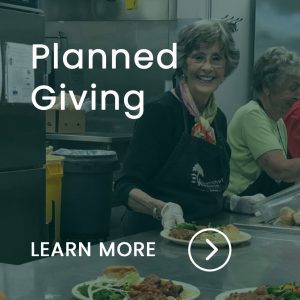For LGBTQIA+ individuals experiencing homelessness survival is top of mind, not pride. Whether someone is homeless or houseless, there are many unseen challenges
It’s June, a time to celebrate LGBTQIA+ and queer pride, including transgender pride. But for people experiencing homelessness survival is top of mind, not pride. Imagine you are a transgender person experiencing houselessness. Maybe you got kicked out of your past living situation for your identity, maybe you are “home-free” which means you’re choosing to be houseless, or you ran away for safety and wellbeing. Every night outside is dangerous and scary. Your only hope is to find others like you who can keep an eye out while you try to sleep.

Duke Reiss wears an I Support Trans Wrongs shirt to support trans people as complex and equal human beings.
Maybe you tried going into an emergency shelter and got tired of the discrimination trans people face in shelters, especially those that do not match their gender identity. You may have been questioned if you are really “trans enough” to stay at your preferred gender-specific shelter. Such as being asked if you are on hormones, if you have had any surgeries, why you dress aligning with your assigned gender, etc. You may be tired of being exposed to transphobia and violence from other shelter participants, or even staff.
Outside, you are being swept from your camp to make room for the pride festival, displaced yet again so housed people can celebrate the same identity that is causing your hardship in shelters.
Pride month has never been the same for me since I was home free. I realize now, it is a time of celebration for the steps society has made in support of queer people. But it’s also a time of mourning for those whose society has failed.
To me, one of our city’s biggest failures is the lack of low-barrier, queer-specific shelter, and housing. A low barrier service means that an organization such as a shelter does not require drug testing, can accommodate mental health conditions, and truly follows the housing first model. The housing first model revolves around the fact that everyone deserves shelter, regardless of sobriety and health status.
Currently, there are only a few queer-specific low-barrier shelters in Portland that I am aware of. The Queer Affinity (QA) Village, is a tiny home community that houses 35 people with an average waitlist of 100. I am so grateful for the QA Village, but they are only able to help a fraction of the houseless queer community. There are also tiny homes operated by local nonprofit WeShine for those who identify as LGBTQIA+.
Some high-barrier shelters will have queer-specific dorms, such as Bybee Lakes Hope Center, but require sobriety and can’t accommodate persistent mental health challenges. And though it is good that there are high-barrier options for those trying to escape substance usage or in need of safe space for families, they still exclude the population of queer people who use substances and/or have persistent mental health symptoms. People may use substances to cope with the oppression they face, those who self-medicate with it, or those who just do not have a problem with substances but use them recreationally.
Trans and queer people experiencing houselessness experience unique barriers as opposed to non-queer individuals. Things such as personal identification, clothing restrictions, and lack of safe spaces contribute to the disproportionate rate queer people experience barriers to housing and shelter.
If your chosen name does not match all your documents, you can be denied housing. Name changes can be a liberating experience for trans people. However, having to give out your name given at birth can be a traumatizing experience and can lead to many barriers such as avoiding medical settings that will not use your preferred name. A trans person may avoid any location where their birth name is required. Despite name changes being so liberating, when you are unhoused, there is an urgency to get all your documents transferred to the new name for your survival. Say you are in the middle of changing over all your documents, and you have a birth certificate that does not match your social security card’s name, this will be a barrier to housing.
Clothing can also be a barrier to accessing resources. It is an unfortunate reality, especially for trans women, to be turned away from queer-friendly spaces because they do not “appear” to be trans. Some trans women do not feel safe wearing feminine clothing, so may not be perceived as feminine enough to be accepted into a female-identifying shelter, and vice versa for trans men. Many trans individuals, especially trans women, are not able to express themselves safely in their preferred clothing, so they dress in “guy mode.”
This leads to the third big barrier, which is access to safe spaces for trans people, where you can come as you are with no barriers around gender. There are some great queer-friendly spaces in Portland like Q Center, Rose Haven, Equi-Institute, and True Colors Recovery. Most gender-specific spaces require a certain adherence to gender identification to be allowed in. This makes it tricky for trans women appearing “masculine” to be welcomed in. As opposed to the accessibility of queer-specific spaces which account for spectrums of genders.
Barriers like these leave many trans people out in the cold and vulnerable.
We can build a stronger bridge for queer people to cross from homeless to housed, by having more lenient policies on what it means to be trans, by accepting people who don’t appear to match a gender identification, and by building more queer-specific low-barrier shelter, day center, and housing options.
Duke Reiss is a Peer Support and Housing Specialist at Blanchet House.

















